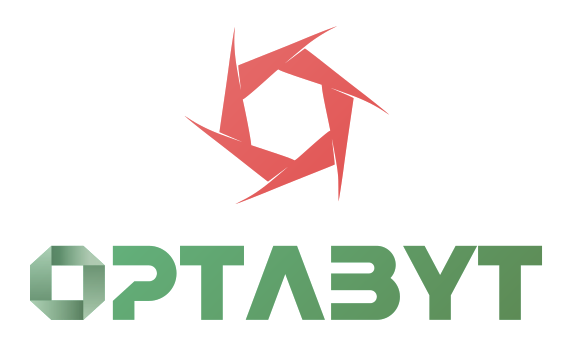
Table of Contents
TogglePerformance-Based Marketing – The Future of Measurable Business Growth
Table of Contents
Performance-Based Marketing – The Future of Measurable Business Growth
In today’s fast-moving digital economy, every business wants one thing — measurable results. That’s exactly what performance-based marketing delivers. Instead of paying for vague promises or empty impressions, you only pay for actual results — clicks, leads, or sales.
This approach has redefined how brands plan their advertising budgets and measure success. Whether you’re a startup or an enterprise, performance-based marketing ensures your investment directly contributes to growth.
What Is Performance-Based Marketing?
Performance-based marketing (or resultatbasert markedsføring) is a digital strategy where advertisers pay only when specific actions are completed — such as a click, signup, or purchase.
Unlike traditional marketing, which focuses on exposure and reach, this model prioritizes outcomes. That makes it one of the most cost-efficient and transparent marketing methods available today.
Common examples include:
Pay-Per-Click (PPC) advertising
Affiliate marketing
Cost-Per-Lead (CPL) campaigns
Cost-Per-Acquisition (CPA) strategies
Social media conversion campaigns
Why Performance-Based Marketing Matters
1. You Pay for Results, Not Exposure
Traditional ads can waste money on impressions that don’t convert. With performance-based marketing, you pay only when real actions occur — ensuring maximum ROI.
2. It’s Data-Driven and Measurable
Every click, conversion, and purchase can be tracked. This helps businesses understand what works, what doesn’t, and how to optimize for better outcomes.
3. Encourages Accountability
Both advertisers and agencies share responsibility for success. Marketing efforts are continuously refined to improve efficiency.
4. Perfect for Businesses of All Sizes
From local shops to large enterprises, performance-based marketing scales according to budget and goals, making it accessible to all.
Understanding Search Intent and the Buyer Journey
A major advantage of performance-based marketing is how it aligns with search intent — what the customer is actively looking for.
There are typically four stages in the buyer journey:
Awareness: The user realizes a problem (e.g., “Why isn’t my website getting traffic?”)
Interest: They search for solutions (“How to improve SEO results”)
Decision: They evaluate providers (“Best performance-based marketing agency”)
Action: They make a purchase or inquiry
A good campaign targets users at each stage with tailored messages, leading to higher conversions and lower ad spend.
The Role of Keywords and Content in Performance-Based Marketing
Keyword optimization plays a vital role in driving qualified traffic. To make your campaigns more effective:
Focus on long-tail keywords that capture high-intent searches.
Use topic clusters around the main keyword (performance-based marketing).
Identify LSI (Latent Semantic Indexing) terms like ROI marketing, result-driven campaigns, and conversion optimization.
Create entity-rich content by referencing trusted industry terms like Google Ads, Facebook Ads Manager, and HubSpot.
This not only improves ad targeting but also boosts organic visibility through semantic SEO.
How a Performance-Based Marketing Strategy Works
Step 1: Define Clear Goals
Before launching any campaign, you must define what “success” means — is it clicks, leads, or purchases?
Step 2: Select the Right Platforms
Choose the platforms that align with your audience. For example:
Google Ads for search-based campaigns
Meta Ads for brand awareness
LinkedIn Ads for B2B leads
Affiliate platforms for niche product promotion
Step 3: Optimize for Conversions
Once ads are live, landing pages must be optimized for speed, UX, and relevance. Every click should lead users toward a specific action.
Step 4: Track and Adjust
Performance marketing is never “set and forget.” Regular analysis and A/B testing improve conversion rates and overall campaign performance.
The Role of AI and Automation in Performance-Based Marketing
In 2025, AI-driven marketing has revolutionized campaign management. Tools like Google’s Performance Max and Meta’s AI optimization automatically analyze data to allocate budgets more efficiently.
Benefits include:
Predictive targeting based on user behavior
Automated bid adjustments for better ROI
AI-generated content and ad creatives
Real-time performance analytics
By combining automation with human creativity, businesses achieve the perfect balance of precision and innovation.
The Importance of User Experience (UX)
Even with the best ads, poor website performance can ruin conversions. That’s why successful performance-based marketing always includes UX optimization:
Mobile-friendly design ensures accessibility.
Fast loading speeds reduce bounce rates.
Clear navigation improves conversion flow.
Strong CTAs (Calls to Action) guide users toward completing actions.
A seamless experience multiplies the impact of every marketing dollar spent.
Voice Search and Conversational Optimization
Voice search continues to grow as users rely on devices like Alexa, Siri, and Google Assistant. Optimizing for voice involves using natural, question-based phrases such as:
“What is performance-based marketing?”
“How can I improve my digital marketing results?”
“Which agency offers performance marketing services?”
By incorporating conversational keywords, you make your brand more discoverable in voice-enabled searches.
Measuring the Success of Performance-Based Campaigns
The biggest advantage of performance-based marketing is measurable results. Key metrics include:
Cost Per Click (CPC)
Conversion Rate (CR)
Cost Per Lead (CPL)
Return on Ad Spend (ROAS)
Customer Lifetime Value (CLV)
By tracking these metrics, businesses can continuously improve efficiency and profitability.
Why Choose Optabyt for Performance-Based Marketing
At Optabyt, we believe that marketing should deliver tangible results — not just traffic. As a performance-based marketing agency, we focus on measurable outcomes like conversions, leads, and sales.
Our expertise includes:
SEO and content optimization
PPC and conversion-focused ads
Landing page design and UX testing
Analytics and data-driven insights
Optabyt helps businesses build sustainable growth with performance-focused strategies. We don’t just run campaigns — we deliver results you can measure, analyze, and celebrate.
Frequently Asked Questions About Performance-Based Marketing
1. What is performance-based marketing?
It’s a strategy where you pay only when specific actions like clicks, leads, or sales occur.
2. How is performance-based marketing different from traditional marketing?
Traditional marketing focuses on exposure, while performance marketing focuses on measurable results.
3. What are the benefits of performance-based marketing?
Higher ROI, accountability, data transparency, and cost efficiency.
4. Which platforms support performance marketing?
Google Ads, Meta Ads, LinkedIn, and affiliate networks are most common.
5. How much does performance-based marketing cost?
It depends on goals and platforms, but costs are flexible since you pay per action.
6. Can small businesses use performance-based marketing?
Yes, it’s ideal for small businesses with limited budgets since you pay only for outcomes.
7. How do you measure campaign performance?
Using metrics like CPC, CPA, and ROAS to track profitability and success.
8. What tools are used in performance-based marketing?
Google Analytics, HubSpot, SEMrush, and Meta Business Suite are key tools.
9. Is content important in performance marketing?
Absolutely. Quality content improves engagement and conversion rates.
10. Why choose Optabyt for performance-based marketing?
Optabyt delivers data-backed, ROI-focused marketing strategies that turn traffic into measurable results.
Lorem ipsum dolor sit amet, consectetur adipiscing elit. Ut elit tellus, luctus nec ullamcorper mattis, pulvinar dapibus leo.
